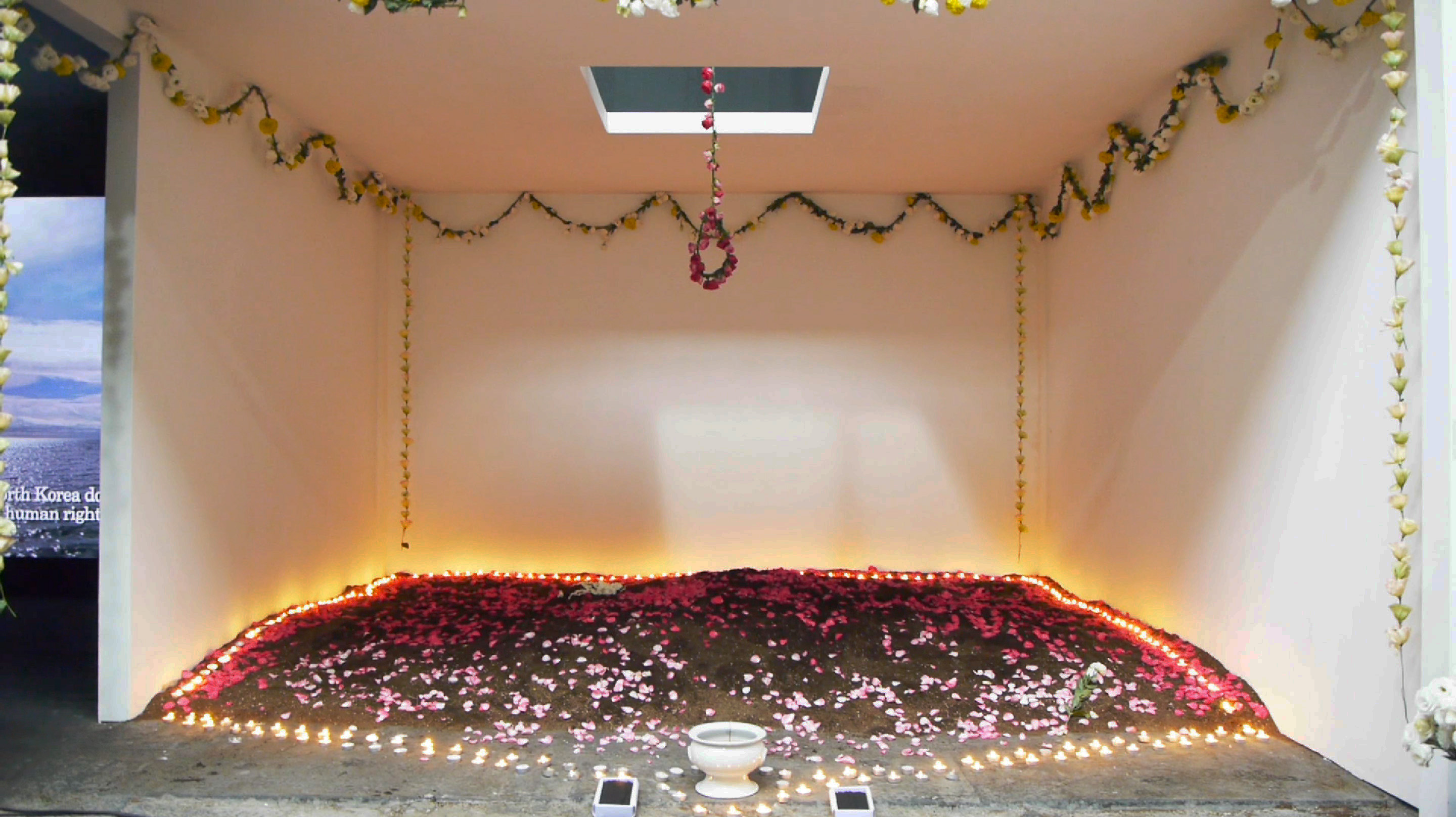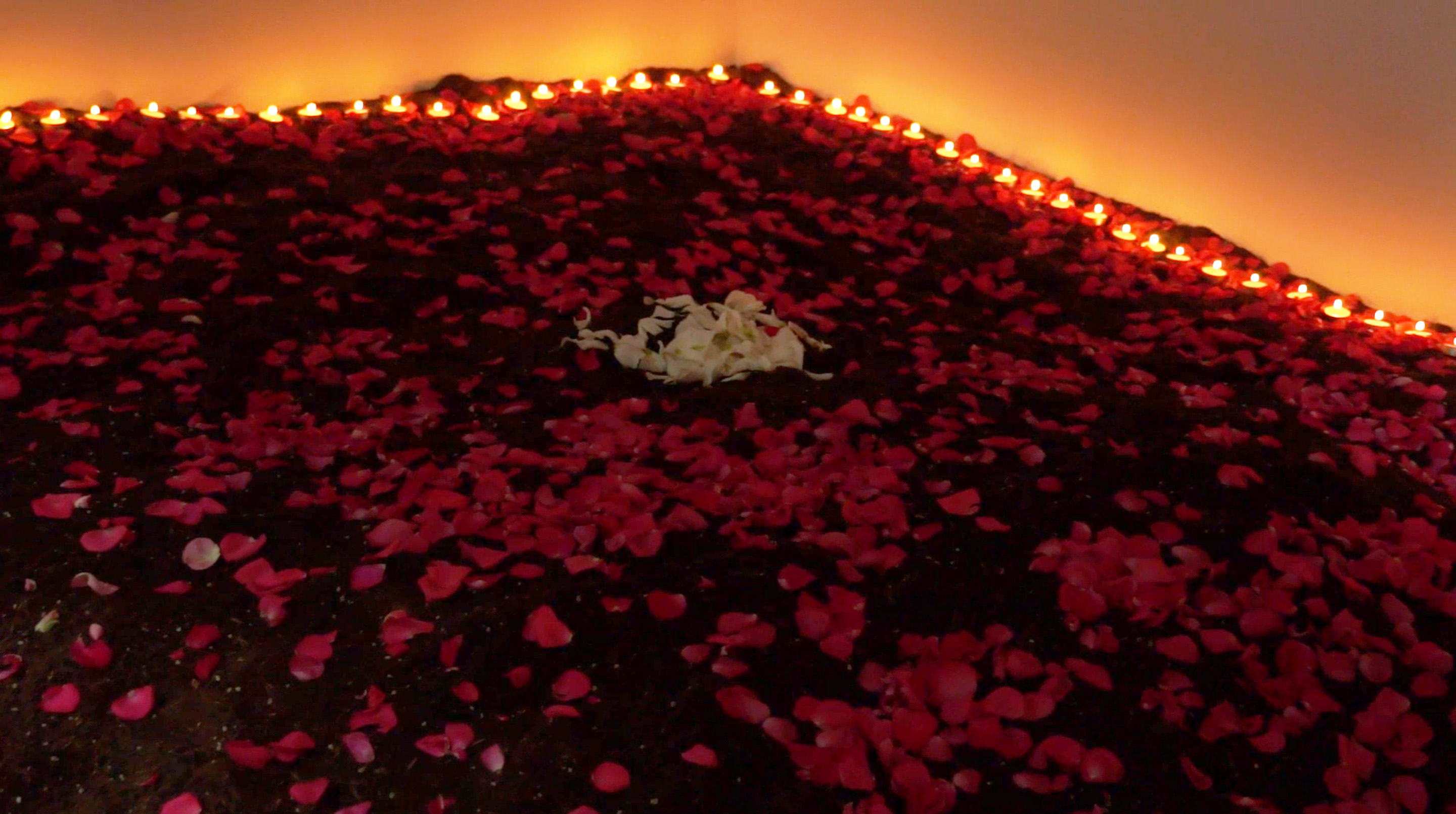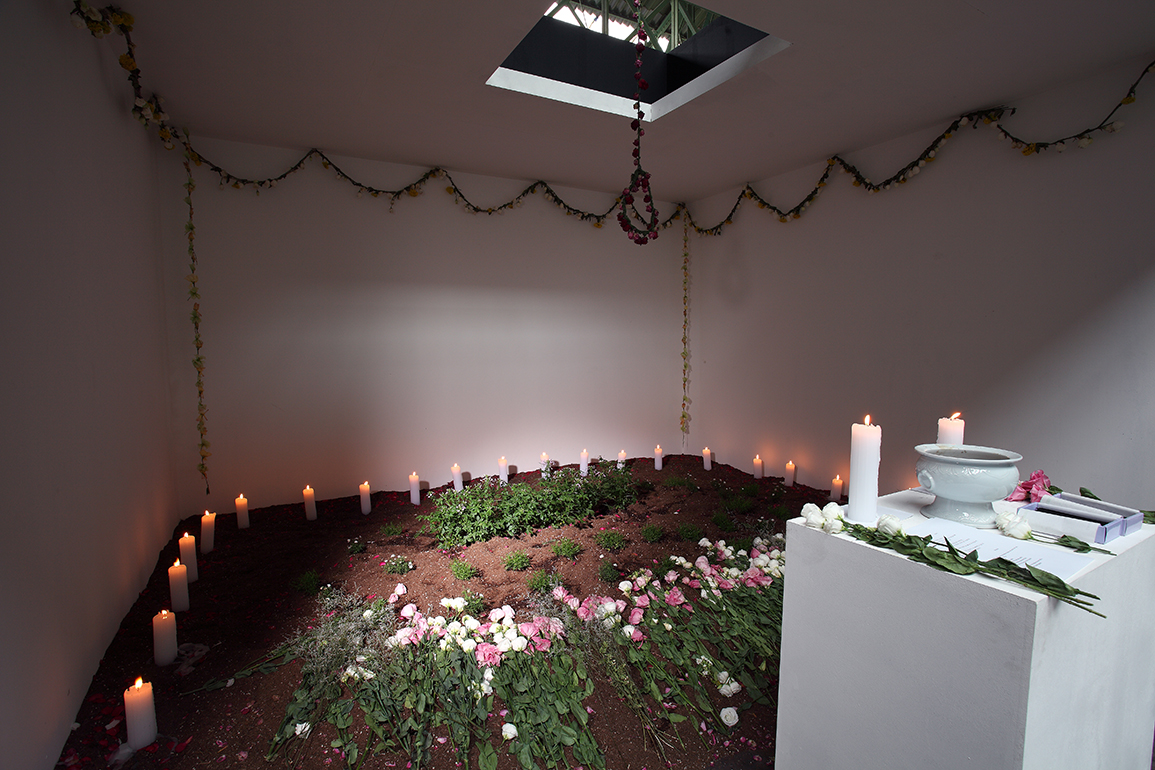performance/ Installation, September 2014
Busan Biennale 2014, Asian Curatorial Exhibition, curated by Juno Seo
“Heaven’s Gate, reconciliation”
This work explores a theme on public mourning for the death prohibited to mourn.
In this piece, the death mourned is in relation to the mass famine in North Korea since the late 1990s.
According to Jean Baudrillard, a key element of the revolution of modernity is how it transforms our relation to the dead. The dead in traditional societies are not only revered as ancestors but also held up as role models, as ideals for the living to follow. But modern people consider themselves free and want to be themselves. They reject the ideals of the past, or the claims of the dead because they think it will force them to become someone other than who they are. But the modern idea of freedom defines freedom as empty, so most people end up in a vicious circle where they want to be themselves, but have no idea of what it means to be one’s self.
I attempt to reintroduce an indigenous function of ritual for death through my art practice with a contemporary interpretation.
——————————————————————————
I invited the audience to pray unconditionally for those who are killed and those who are killed,
for those who are injured and those who gave injury.
——————————————————————————
performance
Click play button ▶︎ to view in auto play mode. Or you can directly click on the image to advance to the next images.
installation view
Since the Korean War is not ended officially, which lead Korea to remain as two separate countries, the truth fact-finding of millions of civilian massacres was not been fully revealed yet.
Many dead spirits are not properly mourned publicly as well as privately. There are many taboos in relation to the massacre due to the regime policy using state violence through both South and North Korean government. People were not even allowed to speak about it for a long time until quite recently. Many of the death in North Korea is unconsciously considered to be undeserving to mourn because there is the belief that many of the sufferings, which South Korean people experienced during and after the Korean War was caused by North Korea.
That anonymous death unmourned keeps reappearing as a pattern, inducing other sorts of tragedy. In North Korea, it was said that an estimated up to three million people were starved since the mid-1990s.
the video piece including my conversation with “returners” was screened with the images of the ocean.
In the conversation, the story of starvation from the late 1990s till the beginning of 2000 was talked about. He witnessed many of his neighbors die one after another. Death became a daily matter, he did not fear it. Since he was working as a doctor, he needed to bury the remains of children. The official number of starved population was estimated as three million. Even though he cannot believe this number, he thinks it would not be an exaggeration. Horrifying scenery of mass starvation was told through his voice.
<Synopsis of the video piece>
During Japanese colonialism, many Koreans immigrated to Japan.
They were living under the condition of severe poverty. Discrimination against Koreans was almost unbearable to many, since 1959, they started to immigrate to North Korea. They are called “returners” as they were considered to return to their mother country.
However many of them were from the Southern part of Korea and they immigrated to totally unfamiliar territory. A total of over 90,000 “returners” immigrated to North Korea and the immigration plan was ended in 1984. After a while, many “returners” were executed, and sent to concentration camps. Many died. In recent years, some of the “returners” escaped from North Korea and immigrated to China, South Korea, and Japan.
The artist was born in Japan as a third-generation Korean and moved to South Korea from Japan in 2011. She met some of the “returners” residing in South Korea and heard stories of their lives.
Her great-grandfather was one of the “returners” who immigrated to North Korea and died.
In the video, her conversation with “returners” is shared with the images of the ocean.
performance documentation, 10min
*The video can be watched with a donation-based contribution.
Please make an inquiry via the contact page.
full interview video, 23 min
*The video can be watched with a donation-based contribution.
Please make an inquiry via the contact page.
천국의 문, 화해
1959년 부터 많은 재일 조선인들이 북한으로 “귀국” 했다.
“귀국자”의 대부분은 조선, 한국 출신의 사람들이었다.
9만 명에 달하는 “귀국자”를 귀국시키는 그 사업은 1984년에 종결되었다.
하지만 “귀국자”의 대부분은 숙청되고 수용소에 보내졌다.
“귀국자” 중에서 북한을 넘어 중국을 거쳐 한국, 일본으로 이주해 온 사람이 있다.
나는 2011년 봄부터 한국에 살기 시작해 많은 “귀국자”가 한국에 살고 있는 것을 알게 되었다.
지상의 낙원을 꿈꾸었던 많은 귀국자가 도착한 그곳은 사실은 “천국의 입구” 였을지도 모른다.
왜냐하면 많은 혼들은 이미 그 문을 지나 저 세상으로 갔기때문이다.
그들은 지상의 괴로움으로부터 벗어나 빛으로 돌아 갔을 지도 모른다.
금선희는 일본에서 나서 자란 재일교포 3세로서 2011년에 한국으로 이주했다.
얼마 후 그의 어머니는 증조할아버지가 북한으로 이주한 뒤
북한에서 서거하셨던 사실을 전했다고 한다.

































